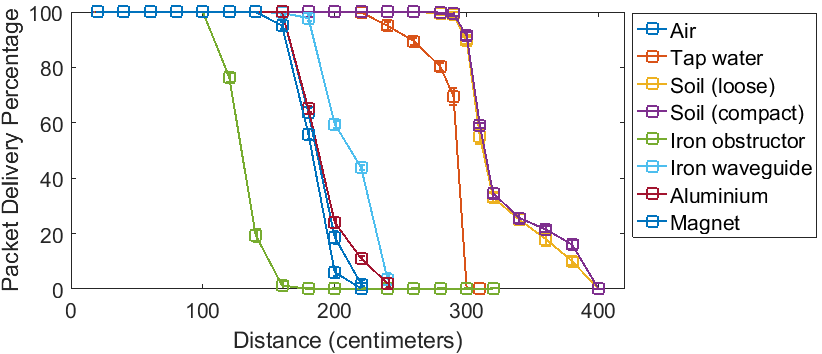Fig. 1: Freelinc board attached to the microcontroller, and the packet delivery ratio for magnetic communication

Smart sensing and short-range wireless communications is a crucial element for infusing intelligence into a large variety of physical infrastructures. Radio frequency (RF) based communications (e.g., Bluetooth, WiFi) are well established and work extremely well in open, uncluttered environments. However, increasingly the communications needs involve environments with characteristics that make RF communications difficult. These include presence of aqueous or plant/animal tissue media which cause high signal absorption, metallic clutter that causes diffraction or shielding of the signals, or underground operation that results in an extremely complex communications channel. Reducing absorption by choosing lower frequencies helps in attenuation, but needs bigger antennas, which introduces the problem of undesirable size and potentially severe interference with nearby radios. Also, the power consumption of RF radios is generally quite high. When localization is important, narrowband RF technologies only provide an accuracy of a few meters, which is inadequate. Ultrasound is another well-established technology that works well in aqueous and underground media, but requires larger size radios and higher power consumption, but still cannot operate in a cluttered environment.
Because of these limitations, we are exploring the emerging magnetic induction-based (MI) communication that is reported to be much more effective in challenging environments. MI is based on the principle of resonant inductive coupling (RIC), which involves two matched coils, each forming a LC circuit with the same resonance frequency. MI modulates the magnetic field and forms the basis of near field communications (NFC) between MI devices. Since the electric field plays no role in this communication, the signal is almost purely magnetic. Such a signal is claimed in the literature to not suffer from usual fading and diffractions associated with the electric field.

Compared to RF, MI-based communication has better penetration performance (i.e., low absorption) as the magnetic permeability of most nonferrous materials commonly in use is very similar to that of air. This includes aqueous media and tissue (e.g., human body, fresh produce, meat, etc.), which are highly absorbent of RF. Even the austenitic stainless steel has permeability of close to 1, and thus does not affect MI. Recognizing this potential of MI, IEEE finalized the 1902.1 standard in 2009 that specifies a near-field MI protocol called RuBee operating at low frequency range of 30-900 KHz. RuBee tags are basically coils with associated with a nonvolatile tag and a low power transmit circuitry that can be powered by the induced current in the coil.
Although MI communication has been studied for some RF-challenged environments such as underwater, underground, and Body Area Networks, many of the studies are simulation based with very limited experimentation. It is thus crucial to build both MI radios and test systems and thoroughly study the channel characteristics in different media. In our experiments we have used Freelinc radios (shown in Fig. 1) without any shielding to study the characteristics of typical off-the-shelf MI radios, which results in a combined effect of magnetic and RF signal especially in the far field as observed from our evaluations. Such experimental evaluation coupled with the modeling and simulation is essential to prove the merits of the technology and its limitations.
Related Publications: